Millions across the globe suffer from diabetes. This health issue calls for a life change, mainly in the diet. A large proprotion of packaged drinks available in the market are either full of sugar or contain artificial sweeteners which may be harmful for health. The hunt for natural drink swaps aiding blood sugar control is thus continual and coconut water seems to be a standout1.
This blog aims to shed light on the potential health benefits of coconut water and its role in diabetes. We will dive into its nutrient profile, its effect on blood sugar, and how to safely add it to your diet.
Coconut water is a health-packed drink from the core of young, green coconuts. This section explains what makes it special, its nutrient content, and why it’s good for you11.
A cup (240 ml) of raw coconut water gives you:
Sweetened versions have more sugar. So, plain coconut water is a better pick1.
Our bodies need vital minerals called electrolytes. They keep our body fluids balanced. Coconut water is rich in them, providing a good part of your daily needs in just one cup8.
Coconut water can help you manage weight while staying hydrated. Plus, it adds a sweet twist to your water intake1.
Nature has packed coconut water with antioxidants. These substances fight harmful free radicals, which makes it a good choice to drink4.
Diabetes is a condition that leads to high blood sugar levels in the blood due to insulin-related issues. There are two key types of the disease:
Signs of diabetes can be unquenchable thirst, passing urine often, sudden weight loss, tiredness, and blurry vision. Managing health and lifestyle changes are key in handling diabetes.
We’ll explore in this section how does coconut water falls into diabetes control, looking at how it can be a good addition to a diabetes-friendly meal plan10.
Consumed wisely, coconut water is said to be helpful for diabetics. This section dives into some likely plus points.

Diabetes often worsens blood flow. Having coconut water may help in widening blood vessels, helping better circulation2. But further research is needed to prove this.

Coconut water makes weight management easier. It’s a low-calorie drink packed with nutrients. This can help keep weight in check and health on track1.
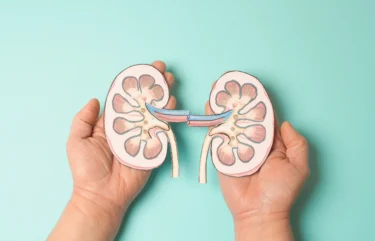
Regular coconut water consumption might be good for kidney health . Research hints that it lowers kidney damage caused by diabetes, although more long-term studies are needed to prove this3.

Coconut water can prove to be a heart-friendly choice. It’s rich in nutrients like potassium9 and magnesium which are good for heart5,7. More research is required to confirm this benefit.
As coconut water has natural sugars, people with diabetes might be concerned. Drawing a line between natural and added sugars can bring clarity.
The sugar found in whole foods is natural. Added sugar is what food processors add to food items and drinks. In coconut water, the sugar is natural. That’s ok if you don’t overconsume it1.
Put next to other drinks, coconut water seems much better. It boasts less carbohydrates and sugar than most sugary drinks, potentially making it a safer pick1.
While coconut water may offer perks for diabetics, they must tread carefully. Below are a few things to remember before adding it to your routine.
Knowing when and how to have coconut water can help you get the most out of it. Let’s look at some strategies:
When consumed wisely, coconut water may have potential perks for diabetics. Its nutrient-rich, low calorie, and electrolyte-packed profile makes it a worthy swap for sugary drinks. As always, talk to your doctor before you introduce anything new to diet, keep a check on blood sugar levels, and eat balanced meals for the best diabetes control.
Also Read: Diabetes: The Silent Killer Sweeping Across India
Stick to 8 ounces or less of raw coconut water daily. However, it’s advisable to discuss with your healthcare provider first if you have diabetes.
People with high potassium levels, kidney problems or those taking antibiotics should always check with a healthcare professional before having coconut water.
While raw coconut water has natural sugars, it still trumps most sugary drinks. Always choose plain and unsweetened varieties to cut down on sugar intake.
For diabetics, plain coconut water, herbal teas, and water infused with fresh fruit or cucumber slices are smart picks. But if are a diabetic, its best to discuss with your doctor before you introduce anything new to diet.
Plain, unsweetened coconut water wins over other types. Always read labels and aim for pure, natural options.
Disclaimer: The information provided here is for educational/awareness purposes only and is not intended to be a substitute for medical treatment by a healthcare professional and should not be relied upon to diagnose or treat any medical condition. The reader should consult a registered medical practitioner to determine the appropriateness of the information and before consuming any medication. PharmEasy does not provide any guarantee or warranty (express or implied) regarding the accuracy, adequacy, completeness, legality, reliability or usefulness of the information; and disclaims any liability arising thereof.
Links and product recommendations in the informationprovided here are advertisements of third-party products available on the website. PharmEasy does not make any representation on the accuracy or suitability of such products/services. Advertisements do not influence the editorial decisions or content. The information in this blog is subject to change without notice. The authors and administrators reserve the right to modify, add, or remove content without notification. It is your responsibility to review this disclaimer regularly for any changes.
Anxiety touches millions globally. It hits everyday life and overall health hard. Lately, there’s been a surge in interest in holistic ways to manage anxiety. One such approach is using essential oils. These natural extracts have been around for ages and studies have reported their use in promoting relaxation, balancing emotions, and enhancing mental wellbeing.
In this blog, we are going to dig into the world of essential oils. We will discuss the evidence backed role of essential oils in easing anxiety. Also, we’ll talk about how you can use essential oils effectively and share some safety tips too.
Essential oils are nature’s gift. They’re extracted from different parts of plants using methods such as distillation or cold pressing. These oils have properties that can potentially shift our emotions, and mood, and bring an overall sense of well-being.
Essential oils are super concentrated, unstable compounds derived from plants. The specific plant part collected varies depending on the oil. This can include flowers, leaves, roots, and bark. People love these oils because they smell nice. Also, they have reported health benefits like reducing stress and pain, improving sleep, and boosting mood.
We can extract essential oils in a few ways. The most common techniques are steam distillation and cold pressing. Each has its own pros and cons. The choice depends on the type of plant, oil yield, and purity wanted.
What is aromatherapy? It’s a healing treatment that uses natural plant extracts, including essential oils, aiming to improve overall health and well-being. Here, smelling plays a vital role. Why? Because it links straightaway to our brain part that handles emotions, memories, and learning – the limbic system. When we sniff an essential oil, its particles mingle with our olfactory or smell system and send signals to our brain that might change our mood and emotional state. Isn’t that fascinating36?
Lots of essential oils have compounds that may shift our mood. Some oils are calming, making us feel still. Others might stimulate us lightly to boost energy and focus. By picking certain essential oils based on their properties, we can potentially influence our emotions. This way, we can become good at handling anxiety.
The chemical makeup of essential oils can vary a lot. This depends on the plant’s source and extraction method. Many essential oils have active compounds that add to their scent, taste, and healing properties. Some compounds, like linalool in lavender or limonene in citrus oils, may interact with our nervous system and help guide our moods and emotions.
There is research backing the anxiety-reducing properties of some essential oils, some studies11 have shown positive links between using specific essential oils and lesser anxiety symptoms, however, more large-scale human studies are needed to confirm these benefits. These oils can be used in addition to the prescribed treatment and therapy for anxiety management and should never be used to replace an existing treatment. The following essential oils have been found to be helpful for people dealing with anxiety issues-
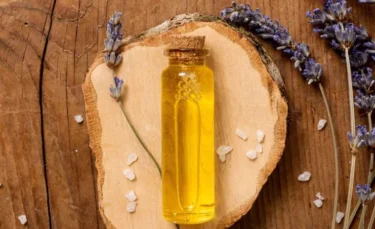
The lavender essential oil comes from the flowers of the Lavandula angustifolia plant. Its scent is sweet and floral and it’s popular for its comforting effects. A good number of studies3 have shown that the fragrance of lavender essential oil may lower anxiety, improve sleep, and create a sense of calm. It may be beneficial for people with general anxiety issues, sleep disorders, and stress25.
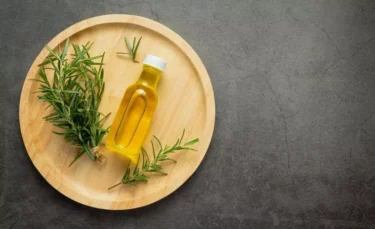
Rose essential oil comes from the petals of Rosa damascena and other rose species. Its aroma is rich and floral. People know it for its soothing properties. It’s been found to help ease anxiety and blues. In one study9, females undergoing painful medical procedures felt less pain and anxiety after a belly massage using rose essential oil22.
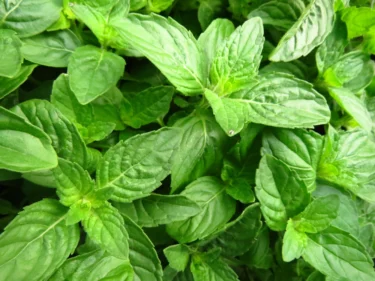
Sweet basil essential oil comes from the leaves of the Ocimum basilicum plant. It smells spicy and herbal6. It’s believed to help relax the mind and ease stress. Although research10 on sweet basil essential oil is limited, some animal studies5 show that it may soothe and make the nervous system drowsy. More research is needed to confirm its full potential for easing anxiety in humans.

Jasmine essential oil comes from the flowers of the Jasminum grandiflorum plant. It has a sweet, exotic aroma and is often used in perfumes and cosmetics for its uplifting scent. According to a small study4, sniffing jasmine essential oil can affect our central nervous system to lift mood and lower anxiety or stress levels.
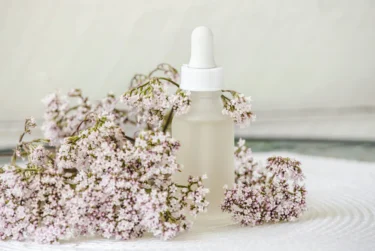
Valerian essential oil is made from the roots of the Valeriana officinalis plant. Its scent is earthy and woody. Not everyone may like it, but it’s valued for its calming effects. Studies suggest that valerian essential oil can help improve sleep quality, easing anxiety, and creating comfort. People with sleep disorders and anxiety-bound problems find it to be useful1.
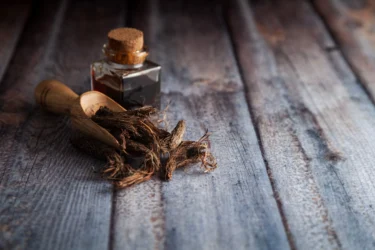
Also known as spikenard, Jatamansi essential oil comes from the roots of the Nardostachys Jatamansi plant. It has a warm, earthy scent and has been used in Ayurvedic medicine to keep the mind calm and help with sleep. Although studies2 on Jatamansi essential oil and anxiety are limited, some animal studies feature that Jatamansi extract has high anti-anxiety effects. This may work through the gamma-aminobutyric acid (GABA) pathway.
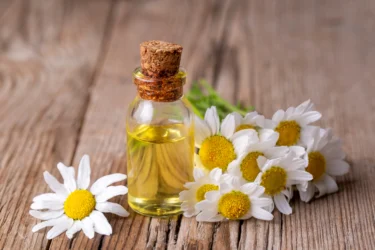
Chamomile essential oil comes from the flowers of the Matricaria chamomilla plant. It’s known for its comforting, calming features to ease anxiety and promote comfort for centuries31. Research7 also suggests that chamomile add-ons can help ease anxiety symptoms in people with mild to moderate anxiety issues.
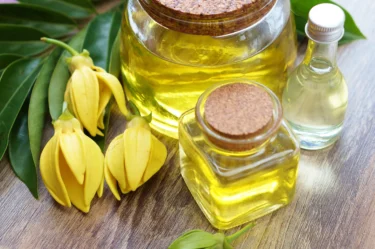
Ylang-ylang essential oil comes from the flowers of the Cananga odorata tree. Its scent is sweet and floral, thought to be uplifting and aphrodisiac. However scientific proof is limited, but traditionally the ylang-ylang essential oil is believed to help lower stress and anxiety and improve overall mood30.
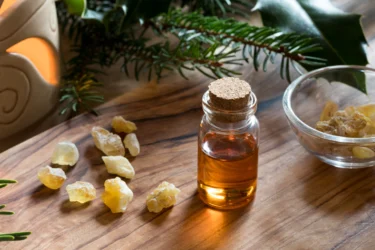
Frankincense essential oil comes from the resin of the Boswellia tree. Its aroma is musky and sweet and people often use it in meditation and spiritual practices to keep calm. Some studies hint that rubbing frankincense essential oil can bring down stress levels and improve anxiety signs12.
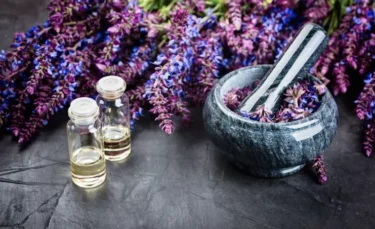
Clary sage essential oil comes from the leaves of the Salvia sclarea plant. It’s loved for its warm, relaxing features and is thought to work great at easing stress and tension. While there’s limited research on clary sage essential oil and anxiety, a small study24 found that sniffing clary sage oil resulted in less stress and more feelings of wellness and comfort.
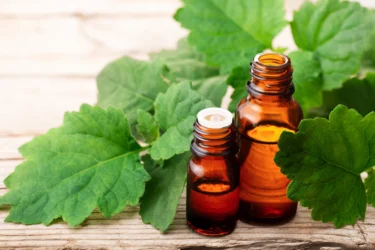
Patchouli essential oil comes from the leaves of the Pogostemon cablin plant. It has a warm, earthy scent that was used in the past to provide calm and comfort. People report that patchouli essential oil can lessen stress and anxiety20. But we need more research to affirm this.
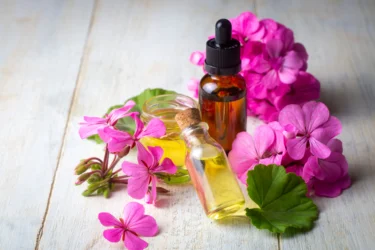
The geranium essential oil comes from the leaves and stems of the Pelargonium graveolens plant. Its scent is sweet, and floral, and is often used in aromatherapy. It can help keep emotions in balance and diminish anxiety16. Some studies15 have found that sniffing geranium essential oil may lower anxiety levels and provide a soothing, calming effect.

Lemon balm essential oil comes from the leaves of the Melissa officinalis plant. Its scent is fresh, citrus-like that’s thought to uplift the mood, which may also lessen the feelings of stress and anxiety17. While research on lemon balm essential oil and anxiety is limited, some reports suggest that it might have a mild comforting effect and help lift the overall mood18.

Sweet marjoram essential oil comes from the flowers and leaves of the Origanum majorana plant. It carries a warm, herby aroma that’s thought to provide soothing and calming benefits. While science is still looking into this, people say that sweet marjoram essential oil helps lessen anxiety, and puts one at rest19.
Besides the above-stated essential oils with the most evidence of anxiety-easing properties, some other oils also deserve a mention.
Although essential oils have been shown to be beneficial in easing anxiety, it is sometimes necessary to take medical help for anxiety issues. A counselor or a psychiatrist can guide you best in devising a management plan for your anxiety based on your underlying mental condition and needs.
You can use essential oils to reduce anxiety in many ways as per your liking. Let’s talk about some popular methods to make the most of essential oils in your daily routine.
One of the easiest and most effective ways to use essential oils is with aromatherapy8,14. You diffuse the oils in the air using a gadget called a diffuser. This lets you breathe in their healing properties and enjoy their calming effects.
There are different kinds of diffusers in the market, from simple reed diffusers to high-tech devices that produce a fine mist of essential oils. When picking a diffuser, think about things like how easy it is to use, area coverage, and noise level.
Another way to use essential oils reduce anxiety is by putting them onto your skin. You can dilute them with carrier oils like almond, coconut or jojoba oil and directly apply on the skin. Some essential oils can be kneaded into the skin or even added to a hot bath to reap the benefit of their calming effects.
Note that it’s crucial always to dilute essential oils before applying them to your skin to prevent skin itchiness, burns, or unique reactions29. You should follow the guidelines provided by the essential oil maker or ask a professional aromatherapist to guide on correct dilution ratios.
When using essential oils topically, target pulse points like your wrists, temples and the back of your neck. These areas have better absorption because they’re close to blood vessels and when the oil is applied to them it warms up faster, facilitating its diffusion into the skin.
Sneaking in the scent of essential oils directly from the bottle or by putting a few drops on a tissue or cotton ball can also be quite relaxing. When anxiety strikes, this may offer immediate relief and help keep the mind calm.
To breathe in essential oils on the move, put a few drops on a cotton ball or nasal inhaler, and take slow, deep breaths. This method can be handy during high-stress moments or bouts of anxiety.
You can also bring essential oils into your environment by means of scented jewelry, air fresheners, or adding a few drops to a hot water bowl, or a humidifier. This way, you wrap yourself with the calming aroma of the essential oils all day long.
For the best results, you may consider adding essential oils to your daily rest routine along with other potential stress-relief techniques. Some examples include:
While essential oils can provide many benefits in easing anxiety, it’s important to be aware of the linked risks and precautions. This ensures safe use:
Before beginning with a new essential oil, it is important to do a patch test. This makes sure you don’t get an allergic reaction33. How to do it? Apply a small amount of diluted essential oil to a quiet area of skin (like the inner elbow). Then wait 24 hours to see any reactions. If redness, itch or swelling occur, stop using the essential oil. Also, reach out to a healthcare provider.
Store essential oils in a cool, dark place away from sunlight and heat. Keep the bottles tightly closed to prevent loss due to evaporation and decay. Be aware of expiration dates, as essential oils can lose effectiveness with time.
If you see signs of a bad reaction to an essential oil, such as rash, itching, breathing trouble, or face or mouth swelling, get medical help at once. Also, if you keep struggling with anxiety and it affects your daily life, reach out to a healthcare provider. A professional can provide guidance and additional treatment options.
Also Read: Overthinking – To What Extent Can It Damage Your Life?
Essential oils potentially offer a natural, holistic way to manage anxiety, keep calm, and improve sleep quality. By understanding the properties of various essential oils and how they work with our nervous system, we can tap into their healing potential and incorporate them into our daily routines for their calming effects. Remember to reach out to a qualified aromatherapist or healthcare provider if you are unsure about using essential oils. Anxiety and sleep disorders need to be diagnosed and treated by a psychiatrist. Do not consider essential oil use as a replacement for treatment prescribed by your doctor. Do not use essential oils without consulting an expert if you are pregnant, nursing, or have a health condition. Also, it’s best to consult your doctor for additional measures that can help you deal better with your anxiety issues.
Also Read: Natural Home Remedies for Anxiety
Some of the top essential oils that possibly ease anxiety include lavender, rose, sweet basil, jasmine, valerian, and chamomile. You may try different oils until you find the ones that suit you best.
While essential oils may help with passing anxiousness and provide some relief during a panic attack, they aren’t a cure. If you’ve been diagnosed with an anxiety disorder or have chronic panic attacks, it’s key to seek help from a healthcare provider for appropriate treatment and management.
Always dilute essential oils in a carrier oil before putting them on your skin, and never ingest essential oils. To use essential oils for easing anxiety, you can diffuse them in the air, put them topically to pulse points, or inhale them directly from a cotton ball or tissue.
Some individuals may get skin itchiness or an allergic reaction when using essential oils, so it’s key to test for allergies before using any new essential oil. If you see redness, itching, or swelling after using an essential oil, stop using it and get in touch with a healthcare provider.
If you are thinking about adding essential oils to your daily rest routine, you can use methods like diffusion, topical application, or inhalation. Also, you may combine essential oils with other relaxation methods such as deep breathing exercises, self-massage, and mindful meditation, for optimal anxiety relief. It is important to consult a psychiatrist for the treatment of anxiety disorders. Remember to consult a qualified aromatherapist or healthcare provider if you have any doubts about using essential oils. It’s particularly important if you are pregnant, nursing, or have a health condition.
Disclaimer: The information provided here is for educational/awareness purposes only and is not intended to be a substitute for medical treatment by a healthcare professional and should not be relied upon to diagnose or treat any medical condition. The reader should consult a registered medical practitioner to determine the appropriateness of the information and before consuming any medication. PharmEasy does not provide any guarantee or warranty (express or implied) regarding the accuracy, adequacy, completeness, legality, reliability or usefulness of the information; and disclaims any liability arising thereof.
Links and product recommendations in the information provided here are advertisements of third-party products available on the website. PharmEasy does not make any representation on the accuracy or suitability of such products/services. Advertisements do not influence the editorial decisions or content. The information in this blog is subject to change without notice. The authors and administrators reserve the right to modify, add, or remove content without notification. It is your responsibility to review this disclaimer regularly for any changes.
Most of the time, we don’t feel our heartbeat. And this is because, when our heart’s rhythm is normal, we usually don’t notice it. But, when it changes, we start to feel it. This is known as heart palpitation. It could be your heart beating too slow or too fast or even feeling like it stopped. Heart palpitations often feel like a fluttering, rapid, or irregular heartbeat. Individuals may feel that their heart is pounding, racing, or experiencing a skipped beat. Palpitations usually aren’t harmful, but they can be uncomfortable causing worry. Sometimes, they may be associated with underlying medical conditions.
Palpitations can arise for many reasons. These might be stress, heavy doses of caffeine or nicotine, excessive alcohol, hormones changing in women, certain medications or anaemia. Other heart palpitations reasons can be hyperactive thyroid, low potassium, or hypoglycaemia, irregular heartbeat or serious heart disease. In rare cases, a heart attack might also cause them1.
Did you know?
To effectively manage heart palpitations, you first need to diagnose the underlying cause. You must know when to get help and understand what your doctor may suggest.
If heart palpitations come with chest pain, shortness of breath, intense dizziness or a feeling of doom, it needs immediate medical attention. These heart palpitations symptoms could mean severe issues like arrhythmias or heart disease1.
Your healthcare provider will give you a physical check-up, listen to your heartbeats and look at your medical history. They may suggest some additional tests1.
The following cardiovascular assessments may be advised:
Dealing with heart palpitations requires multiple simultaneous approaches. Medical procedures, home remedies, and changes in diet can all come into play.
If heart palpitations are arising due a heart condition, medical procedure or medicine use may not be needed. In case of other underlying causes too such as hormonal issues or anaemia, medical management may be necessary. Your doctor can advise you best based on your condition1.
At home, you can also take some steps for managing heart palpitations. Avoiding things that spike palpitations can help. Controlling stress is also important. Yoga, meditation, and deep breathing can assist in this. Be sure not to use drugs like cocaine as they can cause palpitations too1.
Vagal maneuvers can slow your heart rate by stimulating the vagus nerve. This can involve putting cold water on your face, trying to gag, or dunking your face in cold water. But before trying these steps, consult your healthcare provider5.
Changing your diet can help avoid foods causing palpitations and increase those calming them.
Caffeine might potentially exacerbate heart palpitations in susceptible individuals. Therefore, if you experience heart palpitations, I strongly advise avoiding drinks or foods that contain caffeine, such as cola12.
Dr. Siddharth Gupta, B.A.M.S, M.D (Ayu)
Did you ever think about how much our diet influences heart palpitations? Some foods can lead to palpitations, while others can lessen them.
If you’re wondering what foods to avoid if you have heart palpitations, these are some of the foods that can actually set off or intensify palpitations in people prone to them.

Caffeine and energy drinks can stimulate the nervous system causing heart palpitations. Even though occasional use is safe, too much caffeine can cause palpitations6,7.
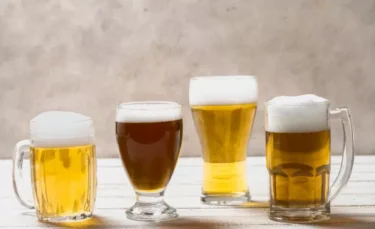
Excessive alcohol use can also cause heart palpitations. Cutting down or avoiding alcohol can help manage them1,6.

Red meat, high in saturated fats, can raise cholesterol and trigger palpitations. Swapping red meat for plant-based protein can aid in reducing this risk8.
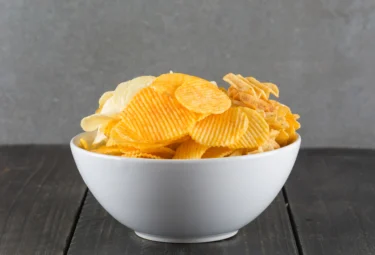
Highly processed foods such as canned soups or packaged meals often contain too much salt and preservatives. These could disturb the heart rhythm causing palpitations. Opting for fresh foods instead of processed ones is a more heart-healthy option6.

Excessive sugar intake can contribute to heart palpitations, as it may lead to sudden spikes and crashes in blood sugar levels. Limiting high-sugar foods can help manage blood sugar and lowers risk of heart diseases, thereby reduce the likelihood of associated palpitations6.

More salt means increased risk of high blood pressure thus more chance of palpitations. So, cut down on salt and keep palpitations in check6.
It’s ideal to avoid or consume the above-mentioned food items in limited quantity if you suffer from palpitations. However, for a more personalized plan, it’s best to discuss with a certified nutritionist.
But it’s not all doom and gloom. Some foods could help reduce frequent heart palpitations and support overall heart health.

Fresh fruits are heart-healthy. They contain essential vitamins and potent antioxidants. Their soluble fibre can also lower bad cholesterol levels decreasing palpitations9.

Whole grains support heart health through ample fibre content. This removes harmful cholesterol types, thus reducing the chance of heart disease and palpitations9.

Soy foods are rich plant-based proteins. They offer various heart benefits like reducing blood pressure and cholesterol levels, helping in reducing palpitations10.

Magnesium is a mineral that helps proper functioning of heart. Magnesium administration has been shown to be beneficial in certain heart rhythm disoorders7. Thus, consuming foods rich in magnesium such as dark chocolate, avocado and nuts can help lower palpitations6.
Although further research is needed, some studies have found the benefits of a plant-based diet to help support normal heart rhythm7. It’s a good idea to follow a balanced diet and include the above-mentioned foods in your diet if you suffer from palpitations. But discuss with your doctor before including anything new in your routine diet if you suffer from underlying medical conditions.
Based on my understanding gained over the years, it is worth noting that certain foods, such as salami, and aged cheeses might potentially contribute to heart palpitations. These foods may contain a compound called tyramine, which has been associated with increased blood pressure13.
Dr. Rajeev Singh, BAMS
Lifestyle changes can have a big role in managing heart palpitations and keeping your heart healthy. Let’s see on how to do that.
I may suggest to stay away from consuming spicy foods, particularly when it comes to conditions such as heart palpitations. In my experience, I have observed that spicy foods might potentially trigger heart palpitations in certain individuals14.
Dr. Smita Barode, B.A.M.S, M.S.
Knowing more about heart palpitations, triggers, and effective management helps you lead a healthier life. Keeping active, having a balanced diet, getting enough rest and reducing stress can manage palpitations. Avoid food items like caffeinated drinks, excessive alcohol, red meat, processed or sugary foods and too much salt. But don’t forget that medical issues can also cause palpitations. So, always stay alert and seek medical help when needed.
Also Read: Food Items To Include In Your Diet If You Have Varicose Veins
A diet containing less known cardiac irritants and good amount of exercise, sleep and stress management can care for your heart.
If changing diet doesn’t ease heart palpitations, reach out to your healthcare provider. The palpitations might point to a hidden health issue needing medical attention.
While most palpitations are harmless, they can be discomforting. If they come with chest pain, loss of consciousness, uncommon sweating, dizziness or light-headedness, it’s serious. Seek medical help right away in such cases.
While occasional heart palpitations while sleeping can be normal, persistent or disruptive cases may indicate an underlying issue and should be evaluated by a healthcare professional for a comprehensive assessment.
In some cases, excessive gas and bloating may lead to increased pressure on the heart, causing palpitations. If symptoms persist or worsen, it’s advisable to consult a healthcare professional for a thorough evaluation.
To alleviate heart palpitations, try practicing deep breathing exercises, staying hydrated, and avoiding stimulants like caffeine. If symptoms persist or worsen, seek medical advice for a proper diagnosis and personalized treatment plan.
Yes, dehydration can contribute to heart palpitations by reducing blood volume and affecting electrolyte balance. Maintaining adequate hydration is important for cardiovascular health and may help prevent palpitations.
Vaping may contribute to heart palpitations, as certain substances in e-cigarettes can impact cardiovascular function. The long-term health effects of vaping, including its impact on heart health, are still being studied. Consultation with a healthcare professional is recommended for individuals experiencing palpitations related to vaping.
Yes, hormonal changes during menopause, particularly the decrease in oestrogen levels, can lead to heart palpitations in some women. While usually temporary, persistent or severe symptoms should be discussed with a healthcare professional.
Yes, gastro oesophageal reflux disease (GORD) can be associated with heart palpitations. The irritation of the oesophagus due to reflux may stimulate the vagus nerve, impacting heart rhythm. Consultation with a healthcare professional is advised for a proper evaluation.
The duration of heart palpitations varies, and they may last for a few seconds to several minutes. If palpitations persist or are accompanied by other concerning symptoms, it is advisable to consult a healthcare professional for a thorough evaluation.
Heart palpitations after eating can be triggered by various factors, such as the release of digestive hormones, increased blood flow to the digestive system, and consumption of stimulants like caffeine or high-sugar foods. Additionally, overeating or underlying medical conditions may contribute to this phenomenon.
Certain vitamins like magnesium and potassium play a role in maintaining heart rhythm, and deficiencies may contribute to palpitations. Ensuring a balanced diet with adequate levels of these vitamins can help support heart health and reduce the occurrence of palpitations.
For minimizing heart palpitations during sleep, lying on your left side is often recommended. This position can help reduce pressure on the heart and promote better blood flow, potentially decreasing the likelihood of palpitations.
Factors like anxiety, hormonal fluctuations, or sleep apnoea can contribute to heart palpitations at night; managing stress, maintaining a consistent sleep schedule, and addressing underlying health issues may help alleviate nighttime palpitations.
Disclaimer: The information provided here is for educational/awareness purposes only and is not intended to be a substitute for medical treatment by a healthcare professional and should not be relied upon to diagnose or treat any medical condition. The reader should consult a registered medical practitioner to determine the appropriateness of the information and before consuming any medication. PharmEasy does not provide any guarantee or warranty (express or implied) regarding the accuracy, adequacy, completeness, legality, reliability or usefulness of the information; and disclaims any liability arising thereof.
Links and product recommendations in the information provided here are advertisements of third-party products available on the website. PharmEasy does not make any representation on the accuracy or suitability of such products/services. Advertisements do not influence the editorial decisions or content. The information in this blog is subject to change without notice. The authors and administrators reserve the right to modify, add, or remove content without notification. It is your responsibility to review this disclaimer regularly for any changes.
लहसुन (गार्लिक) सदियों से हमारी रसोई का हिस्सा रहा है। लहसुन (गार्लिक) की एंटीबैक्टीरियल और एंटीसेप्टिक प्रकृति के कारण इसमें उपचारात्मक और औषधीय गुण होते हैं। लहसुन (गार्लिक) के ये फायदेमंद गुण इसमें मौजूद एलिसिन कंपाउंड के कारण होते हैं। यह फास्फोरस, जिंक, पोटेशियम और मैग्नीशियम जैसे मिनरल से भरपूर है। लहसुन (गार्लिक) में विटामिन C,विटामिन K, फोलेट, नियासिन और थायमिन भी काफी अच्छी मात्रा में पाया जाता है।
यहां 100 ग्राम कच्चे लहसुन (गार्लिक) का पोषण चार्ट दिया गया है। ध्यान दें कि 1 मध्यम से बड़े लहसुन की कली का वज़न 3-8 ग्राम के बीच होता है।
| प्रति 100 ग्राम कच्चा लहसुन (गार्लिक) | वैल्यू | सुझाई गई दैनिक मात्रा का कितनाप्रतिशत है |
| कैलोरी | 149 | 7% |
| कार्बोहाइड्रेट | 33.1 ग्राम | 11% |
| फाइबर | 2.1 ग्राम | 8% |
| फैट | 0.5 ग्राम | 1% |
| प्रोटीन | 6.4 ग्राम | 13% |
| विटामिन B6 | 1.2 मिलीग्राम | 62% |
| विटामिन C | 31.2 मिलीग्राम | 52% |
| थायमिन | 0.2 मिलीग्राम | 13% |
| राइबोफ्लेविन | 0.1 मिलीग्राम | 6% |
| इसमें विटामिन A, E, K, नियासिन, फोलेट, पैंटोथेनिक एसिड और कोलीन भी होता है | ||
| मैंगनीज | 1.7 मिलीग्राम | 84% |
| सेलेनियम | 14.2 माइक्रोग्राम | 20% |
| कैल्शियम | 181 मिलीग्राम | 18% |
| कॉपर | 0.3 मिलीग्राम | 15% |
| फास्फोरस | 153 मिलीग्राम | 15% |
| पोटैशियम | 401 मिलीग्राम | 11% |
| आयरन | 1.7 मिलीग्राम | 9% |
| इसमें जिंक, मैग्नीशियम और सोडियम भी होता है |
Lahsun (Garlic) khaane se sharir ko neeche bataye gaye faayede milte hain:

कच्चे लहसुन (गार्लिक) में खांसी और जुकाम के इंफेक्शन को दूर करने की क्षमता होती है। खाली पेट लहसुन (गार्लिक) की दो कली कुचल कर खाने से सबसे ज़्यादा फायदा होता है। बच्चों और शिशुओं के लिए, लहसुन (गार्लिक) की कलियों को धागे में बांधकर उनके गले में पहनाने से कफ जमने के लक्षणों से राहत मिलती है।

लहसुन (गार्लिक) में पाया जाने वाला एलिसिन कंपाउंड एलडीएल (खराब कोलेस्ट्रॉल) के ऑक्सीकरण को रोकता है। यह कोलेस्ट्रॉल लेवल को कम करता है और दिल की सेहत में सुधार करता है। लहसुन (गार्लिक) का नियमित सेवन से खून के थक्के नहीं जमते हैं और इस तरह से यह थ्रोम्बोएम्बोलिज्म (खून के थक्के से रक्त वाहिका में रुकावट) को रोकने में मदद करता है। लहसुन (गार्लिक) ब्लड प्रेशर को भी कम करता है इसलिए यह हाई ब्लड प्रेशर के रोगियों के लिए अच्छा है।हाई ब्लड प्रेशर को नियंत्रित करने के तरीके के बारे में और पढ़ें।
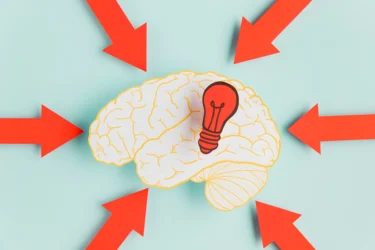
लहसुन (गार्लिक) अपने एंटीऑक्सीडेंट और एंटी-इंफ्लेमेटरी गुणों के कारण दिमाग की सेहत को बेहतर बनाता है। यह अल्जाइमर और डिमेंशिया जैसी न्यूरोडीजेनेरेटिव बीमारियों (ऐसी बीमारियां जिसमें सेंट्रल नर्वस सिस्टम की कोशिकाएं काम करना बंद कर देती हैं) में असरदार है। अपनी डाइट में शामिल करने वाले सबसे अच्छे ब्रेन फूड्स के बारे में और पढ़ें।

कच्चे लहसुन (गार्लिक) को डाइट में शामिल करने से पाचन से जुड़ी समस्याएं ठीक हो जाती हैं। यह आंतों को फायदा पहुंचाता है और जलन को कम करता है। कच्चा लहसुन (गार्लिक) खाने से पेट के कीड़े मर जाते हैं। अच्छी बात यह है कि यह खराब बैक्टीरिया को नष्ट कर देता है और आंत में अच्छे बैक्टीरिया की रक्षा करता है।

देखा गया है कि डायबिटीज से पीड़ित लोगों द्वारा कच्चे लहसुन (गार्लिक) का सेवन करने पर उनका ब्लड शुगर लेवल नियंत्रित रहता है।

लहसुन (गार्लिक) फ्री रेडिकल्स से रक्षा करता है और डीएनए को होने वाले नुकसान से बचाता है।लहसुन (गार्लिक) में मौजूद जिंक रोग इम्युनिटी बढ़ाता है। विटामिन C इंफेक्शन से लड़ने में मदद करता है। यह आंख और कान के इंफेक्शन में बहुत फायदेमंद होता है क्योंकि इसमें एंटीमाइक्रोबियल (रोगाणुरोधी) गुण होते हैं।

लहसुन (गार्लिक) मुंहासों को रोकने में मदद करता है और मुंहासों के निशान को हल्का करता है। कोल्ड सोर (मुंह के किनारे होने वाले छाले या फफोले), सोराइसिस, चकत्ते और छाले, इन सभी सभी परेशानियों में लहसुन (गार्लिक) के रस इस्तेमाल से फायदा मिल सकता है। यह यूवी किरणों से भी बचाता है और इसलिए स्किन की उम्र बढ़ने से रोकता है।
Read in English: 7 Home Remedies for Glowing Skin

लहसुन (गार्लिक) में उज़्यादा मात्रा में एंटीऑक्सीडेंट होते है जिसके कारण यह फेफड़े, प्रोस्टेट, ब्लेडर, पेट, लिवर और पेट के कैंसर से शरीर की रक्षा करता है। लहसुन (गार्लिक) का एंटीबैक्टीरियल (जीवाणुरोधी) एक्शन पेप्टिक अल्सर को रोकता है क्योंकि यह आंत में इसे बढ़ने नहीं देता है।

लहसुन (गार्लिक) फैट जमा करने वाली एडीपोज सेल्स (वसा कोशिकाओं) के निर्माण के लिए जिम्मेदार जीन को कम करता है। यह शरीर में थर्मोजेनेसिस को भी बढ़ाता है और ज़्यादा फैट बर्न करने और एलडीएल (खराब कोलेस्ट्रॉल) को कम करने में मदद करता है।
लहसुन (गार्लिक) वज़न घटाने के लिए तो अच्छा है ही, साथ ही यह बहुत ज़्यादा पौष्टिक भी है। लहसुन (गार्लिक) की एक कली जो लगभग 3 ग्राम होती है, उसमें निम्नलिखित पोषण होता है :

लहसुन (गार्लिक) को “परफॉरमेंस बढ़ाने वाले” पदार्थों में से एक माना जाता है। पुराने ज़माने में मजदूरों की थकान मिटाने और उनकी कार्य क्षमता में सुधार करने के लिए लहसुन (गार्लिक) का इस्तेमाल किया जाता था। चूहों पर किए गए अध्ययन से पता चलता है कि लहसुन (गार्लिक) खाने से एक्सरसाइज परफॉरमेंस में सुधार करने में मदद मिलती है। जिन लोगों को दिल की बीमारी थी, उन्होंने 6 सप्ताह तक लहसुन (गार्लिक) का सेवन किया और इसके कारण उनकी हार्ट रेट (हृदय गति) में 12% की कमी आई और एक्सरसाइज करने की क्षमता ज़्यादा बेहतर हो गई।

ताजा लहसुन (गार्लिक) के रस में ई. कोली बैक्टीरिया के विकास को कम करने की क्षमता होती है जो मूत्र मार्ग में इंफेक्शन (यूटीआई) का कारण बनते हैं। यह किडनी इंफेक्शन को रोकने में भी मदद करता है।
लहसुन (गार्लिक) घावों के इंफेक्शन को कम करता है, बालों, हड्डियों की सेहत और लिवर की सेहत को बढ़ावा देता है। ज़्यादातर घरेलू उपचार तभी असरदार साबित होते हैं जब लहसुन (गार्लिक) को कच्चा खाया जाता है।

जापान के अध्ययनों के मुताबिक, पानी और अल्कोहल के मिश्रण में रखे गए कच्चे लहसुन (गार्लिक) को खाने से एक्सरसाइज की सहनशक्ति पर अहम असर पड़ सकता है। इंसानों पर भी अध्ययन किए गए हैं जिनसे पता चला है कि लहसुन (गार्लिक) वास्तव में एक्सरसाइज से होने वाली थकान के लक्षणों में सुधार कर सकता है।

जिन लोगों को काम के कारण सीसे (लेड) की विषाक्तता का ज़्यादा खतरा होता है, उनके लिए लहसुन (गार्लिक) सबसे अच्छा ऑर्गेनिक समाधान हो सकता है। 2012 में किए गए अध्ययनों से पता चला है कि लहसुन (गार्लिक) वास्तव में खून में सीसे (लेड) की विषाक्तता के इलाज के लिए इस्तेमाल की जाने वाली सामान्य दवा डी-पेनिसिलमाइन की तुलना में ज़्यादा सुरक्षित और बेहतर है।

बुज़ुर्ग महिलाओं के लिए मेनोपॉज़ (रजोनिवृत्ति) की अवधि अक्सर साइटोकिन नाम के प्रोटीन के अनियमित उत्पादन के कारण एस्ट्रोजन नामक मादा हार्मोन की कमी से जुड़ी हुई है। यह देखा गया है कि लहसुन (गार्लिक) का सेवन इसे कुछ हद तक नियंत्रित कर सकता है और इसलिए, यह मेनोपॉज़ (रजोनिवृत्ति) के बाद एस्ट्रोजन की कमी को दूर करने में प्रभावी हो सकता है।

अपनी नियमित डाइट में लहसुन (गार्लिक) खाने से यह ऑस्टियोआर्थराइटिस (अस्थिसंधिशोथ) की शुरुआत को रोकने या कम करने में भी मदद कर सकता है। रिसर्च से पता चला है कि लहसुन (गार्लिक) में डायलिल डाइसल्फाइड नाम का कंपाउंड होता है जो हड्डियों की डेंसिटी (घनत्व) को बनाए रखने में मदद करता है और इसलिए ऑस्टियोआर्थराइटिस (अस्थिसंधिशोथ) जैसी हड्डियों से संबंधित बीमारियों की शुरुआत होने में देरी कर सकता है।

माना जाता है कि लहसुन (गार्लिक) आपके खून में प्लेटलेट्स की चिपचिपाहट को कम करने में मदद करता है। ये प्लेटलेट्स खून के थक्के जमने के लिए जिम्मेदार होते हैं। लहसुन (गार्लिक) की सही खुराक लेने से खून पर प्लेटलेट्स के अत्यधिक थक्का जमने के प्रभाव को कम करने में मदद मिल सकती है। इसलिए, यह धमनियों (आर्टरी) के अंदर ऐसे अनावश्यक खून के थक्कों को रोकने में मदद कर सकता है जो आपके दिल तक पहुंच सकते हैं जिससे दिल का दौरा पड़ सकता है।
जब आप लहसुन (गार्लिक) को मुंह से लेते हैं तो यह ज़्यादातर सुरक्षित होता है। इससे सांसों की बदबू, सीने में जलन, गैस और दस्त जैसे साइड इफेक्ट हो सकते हैं। अगर आप मुंह से कच्चा लहसुन खाते हैं, तो साइड इफेक्ट अक्सर खराब होते हैं और कुछ लोगों में ब्लीडिंग (रक्तस्राव) और एलर्जी का खतरा बढ़ सकता है।
लहसुन (गार्लिक) के जैल और पेस्ट जैसे प्रोडक्ट सुरक्षित हैं। लेकिन लहसुन (गार्लिक) स्किन को नुकसान पहुंचा सकता है जिससे जलन हो सकती है। ख़ास तौर पर कच्चे लहसुन (गार्लिक) को स्किन पर लगाने से स्किन में गंभीर जलन हो सकती है।
गर्भावस्था के दौरान या या स्तनपान कराने वाली माताओं को ज़्यादा मात्रा में लहसुन (गार्लिक) खाने से बचना चाहिए। बच्चे इसे 8 सप्ताह तक रोजाना तीन बार 300 मिलीग्राम तक की खुराक में ले सकते हैं और इससे अधिक नहीं लेनी चाहिए। ब्लीडिंग (रक्तस्राव) की समस्या वाले लोगों को लहसुन (गार्लिक) खाने से बचना चाहिए। अगर आप सर्जरी करवाएं, तो लहसुन (गार्लिक) का सेवन न करें क्योंकि यह ब्लीडिंग (रक्तस्राव) को बढ़ा सकता है और ब्लड प्रेशर में बाधा उत्पन्न कर सकता है। सर्जरी से दो हफ्ते पहले लहसुन (गार्लिक) खाना बंद कर दें और लहसुन (गार्लिक) ब्लड शुगर लेवल को भी कम कर सकता है, इसलिए आपको जागरूक और सावधान रहना चाहिए।
Disclaimer: The information provided here is for educational/awareness purposes only and is not intended to be a substitute for medical treatment by a healthcare professional and should not be relied upon to diagnose or treat any medical condition. The reader should consult a registered medical practitioner to determine the appropriateness of the information and before consuming any medication. PharmEasy does not provide any guarantee or warranty (express or implied) regarding the accuracy, adequacy, completeness, legality, reliability or usefulness of the information; and disclaims any liability arising thereof.
Links and product recommendations in the information provided here are advertisements of third-party products available on the website. PharmEasy does not make any representation on the accuracy or suitability of such products/services. Advertisements do not influence the editorial decisions or content. The information in this blog is subject to change without notice. The authors and administrators reserve the right to modify, add, or remove content without notification. It is your responsibility to review this disclaimer regularly for any changes.
From religious ceremonies to mouth-fresheners, ‘paan supari’ has been an inseparable combination. We know a lot about the ‘paan’ leaves, but not enough attention has been given to ‘supari’ or betel nuts. Betel nuts are the seeds of the fruits of palm trees, which are mostly cultivated in eastern countries like Bangladesh, India, Malaya, Ceylon, Philippines and Japan. The scientific name of betel nut is Areca cattechu Linn. It is commonly known as Areca nut1. In this article, we will learn all that you might want to know about betel nuts, including their health benefits, side effects and precautions, to name a few.
Betel nuts are rich in a variety of compounds, like carbohydrates, proteins, fibres, minerals like calcium, copper, phosphorus, and iron and Vitamins like Vitamin B6 and C3. Betel nuts are also rich in phytochemicals, which have a high medicinal value. The phytochemicals present in betel nuts include alkaloids like arecoline, guvacoline, guvacine, arecaidine and polyphenols, which mostly include flavonoids like leucocyanidins, catechins, epicatechin and tannins. Here are the Nutritional components of betel nuts with their percentage values:
Betel nuts are also rich in phytochemicals, which have a high medicinal value. The phytochemicals present in betel nuts include alkaloids like arecoline, guvacoline, guvacine, arecaidine and polyphenols, which mostly include flavonoids like leucocyanidins, catechins, epicatechin and tannins4. Here are the phytochemical components of betel nuts with their percentage values:
Betel nuts show numerous scientifically proven properties, some of which are mentioned below:
Some of the health benefits of betel nuts for overall health are:
Literature studies16 support that the consumption of nuts may help manage blood glucose. Musdja et al. conducted a study7 in 2021. The findings of this study showed that betel nut consumption in diabetic rats helped in reducing blood glucose. This effect is attributed to the presence of alkaloids like arecoline and guvacoline. This indicates that betel nuts have the potential to reduce blood glucose and thus may help manage diabetes. However, to claim these results in humans, we need more studies. It is further advised not to self-medicate and to consult your physician for proper management of abnormal blood glucose.
Literature studies state that exercising regularly and following a healthy diet consisting of fruits, vegetables, and nuts may have a positive impact on blood pressure. A study4 conducted by Chen et al. in 2021 stated that betel nuts might improve blood circulation and help in reducing high blood pressure. The exact mechanism behind this effect is not known. Therefore, it is advised not to rely on betel nuts as a remedy, and kindly consult your physician for the proper management of hypertension.
A lipid profile is a complete cholesterol test which measures total cholesterol, triglycerides, low-density lipoprotein (LDL), high-density lipoprotein (HDL), etc. Peng et al. in 2015 conducted a review8, and the summary estimates of this review state that betel nuts may help in lowering elevated lipid levels. However, we need more studies to claim these results with greater reliability. Also, it is advised not to consider the consumption of betel nuts as an alternative to modern medicine; you should always consult your doctor for proper management of an abnormal lipid profile.
An infection occurs when germs like bacteria, viruses, fungi or parasites invade the body. Ayurveda, or the Indian system of medicine, helps support the use of household remedies for managing infections. A review9 conducted by Peng et al. in 2015 stated that betel nuts might help inhibit the growth of bacteria, viruses, fungi and parasites like tapeworms and ringworms. This effect is due to the presence of polyphenols and alkaloids in betel nuts. This indicates that these nuts may have the potential to manage infections. However, you should not consider these nuts as an alternative to medicines; it is always advised to consult a physician for proper management of any infection.
Literature studies support the use of betel nuts in reducing allergies. A study10 conducted in 2015, the summary states that betel nuts may have the potential to manage skin irritation and provide relief from allergies. The exact mechanism behind these effects is unknown; however, it can help reduce inflammation. It is advised to take a professional opinion for the proper treatment of any allergy or skin irritation. You should not consider betel nuts as an alternative to modern medicine.
According to studies11, arecoline, which is an alkaloid present in betel nuts, increases the secretion of human saliva and increases the contractions of the digestive system, which helps improve digestion. Traditionally, they have been used for managing constipation. Therefore, betel nuts may positively impact the digestive system. To claim these results with greater reliability, we need more studies. It is further advised not to consider these nuts as an alternative to modern medicine; kindly consult your doctor for proper management of any digestive disorder.
Though there are studies that show the benefits of betel nuts in various conditions, these are insufficient, and there is a need for further studies to establish the true extent of the benefits of betel nuts on human health.
You must consult a qualified doctor before consuming any herbal supplements. You should not discontinue or replace your ongoing treatment of modern medicine with an ayurvedic/herbal preparation without consulting your doctor.
Also Read: Masoor Dal: Uses, Benefits, Nutritional Value & more!
Liu et al. conducted a study in 201313, which found that commonly reported side effects of betel nuts include nausea, vomiting, dizziness and abdominal pain. A study17 in 2021 stated that betel nuts contain arecoline alkaloid; if consumed in larger amounts, it can be poisonous and may increase the risk of cancer.
However, if you experience any adverse reactions to betel nuts, it is advised to discontinue their intake and immediately contact a doctor or your Ayurvedic physician who has prescribed it, as they will guide you properly for your symptoms.
Also Read: Kayam Churna: Uses, Benefits, Side Effects and More
Consuming betel nuts is okay if taken in moderate amounts. However, the following considerations must be taken:
You may become addicted to betel nut chewing, watch out for symptoms of anxiety, insomnia and mood swings14. If you face these complaints, it is likely that you’re facing betel nut addiction. Consult your doctor for proper advice on betel nut withdrawal.
Consumption of betel nuts is contraindicated in people with:
Also Read: Kanchanar Guggulu: Benefits, Side Effects, Precautions & More!
However, you must always seek the advice of your Ayurvedic physician about the possible interaction of betel nuts with other drugs.
Betel nuts are the seeds of the fruits of palm trees which are mostly cultivated in eastern countries like Bangladesh, India, Malaya, Ceylon, Philippines and Japan1.
In Hindi, betel nuts are called supari.
No, there are no proven results on the effects of betel nuts on hair loss.
The safety of betel nut consumption during pregnancy is not well-established; it is therefore advised to avoid its use and consult your doctor for the same.
Disclaimer: The information provided here is for educational/awareness purposes only and is not intended to be a substitute for medical treatment by a healthcare professional and should not be relied upon to diagnose or treat any medical condition. The reader should consult a registered medical practitioner to determine the appropriateness of the information and before consuming any medication. PharmEasy does not provide any guarantee or warranty (express or implied) regarding the accuracy, adequacy, completeness, legality, reliability or usefulness of the information; and disclaims any liability arising thereof.
Mudra science is an ancient science that is known to connect certain energy flows in the mind-body system. Mudras are emotional, psychic, aesthetic and devotional gestures practised by yogis since ages. In Sanskrit, ‘mudra’ means a gesture or ‘attitude’. A mudra may involve the whole body in a combination of asanas and pranayamas or it can be a simple hand posture. The Hatha Yoga Pradipika and other classic texts describe mudras as an independent branch of yoga requiring subtle awareness. The Gherand Samhita, an ancient Sanskrit text of yoga, mentions 25 mudras which are classified under five different categories like yogic, spiritual, curative, customary and religious mudras. In this article, we will explore the health benefits of one such mudra, apana mudra1,2.
Apana mudra is included in the curative mudra category and is a hand gesture done to exert control on excretory and reproductive organs. In Indian philosophy, there are five main channels of the body’s vital air or energies called ’prana’ (one of which is apana). It is responsible for the processes taking place in the lower body, like defecation, urination and menstruation. Apana mudra is also called the mudra of digestion2,3.
Did You Know?
Apana mudra must be done correctly for maximum health benefits. One may perform apana mudra in the following manner:
Let me give you a tip! Apana mudra may help in improving digestion. Studies have shown that along with other benefits, regular practice of Apana mudra may help in reducing flatulence and improving digestion. It may also help in enhancing memory and concentration6.
Dr. Siddharth Gupta, B.A.M.S, M.D (Ayu)
Keeping the origin and history in mind, let us now discuss some benefits of apana mudra. Enlisted below are a few health benefits of apana mudra:
Irritable Bowel Syndrome (IBS) is a common disorder affecting the stomach and intestines. In Ayurveda, there are five major life forces (vayus), namely samana, apana, prana, vyana and udana. Out of these, samana is responsible for digestion and balancing apana and prana. IBS is characterized by an imbalance in apana which results in an imbalance in abdominal contractility and result in diarrhoea or constipation. Kavuri et al. conducted a study3 in 2022 showing that the practice of apana mudra helps in controlling excretory functions and may normalize diarrhoea or constipation, which may help manage IBS. However, it is advised not to consider the practice of apana mudra as an alternative to modern medicine. So, it is better to take a professional opinion for any IBS symptoms. Additionally, you should practice this mudra strictly under the guidance of a qualified trainer.
Literature studies show that the practice of asanas, pranayamas and mudras may help manage diabetes. Kumar et al. conducted4 a review in 2022; the findings of this review show that the practice of apana mudra may help manage diabetes. The exact mechanism behind this effect is not clear and it is, therefore, advised to consult a doctor for the proper treatment of diabetes and not rely on this mudra alone. Additionally, the practice of apana mudra should be strictly done under the supervision of a qualified trainer.
Due to a sedentary lifestyle, long periods of inactivity and underlying diseases like diabetes have increased the risk of cardiac diseases. Kumar et al. in 2022 conducted4 a review that showed the practice of apana mudra may help reduce the risk of cardiac diseases. It may also help in managing common cardiac complaints like chest pain. Thus, the practice of apana mudra may help manage cardiac diseases. However, it is advised to consult your doctor for their proper management and practice apana mudra under the supervision of a qualified trainer only.
The human excretory system plays an important role in removing unnecessary waste materials from the body. A review was conducted4 by Kumar et al. in 2022, which states that apana mudra or the mudra of digestion, plays a vital role in the regulation of the excretory system. However, there are limited studies that claim these results, so you should not rely on this mudra alone and consult a doctor for proper treatment of any disorders of the excretory system. Additionally, it is best to practice this mudra under the supervision of a qualified trainer.
Physical fitness, which is described as a state of health and well-being, includes not only a strong muscular system (muscular fitness) but also the ability of the heart and lungs to perform various activities (cardiovascular endurance). James et al. in 2002 conducted5 a review, and the findings of this review show that the practice of hatha yoga may improve muscular fitness, flexibility, endurance and cardiovascular endurance. This indicates that apana mudra, which is part of hatha yoga, may positively impact physical fitness. Additionally, the practice of this mudra should be done strictly under the guidance of a qualified trainer.
Note: The benefits mentioned above of apana mudra are studied in a limited human population. To ascertain these claims in humans, more studies are required.
Although the practice of Yoga may help in the development of the mind and body, however, you should not consider yoga as an alternative to modern medicine. It is advised not to rely on Yoga alone to treat any condition. Kindly consult a qualified doctor for proper treatment. Additionally, any asana practice should be done under the supervision of a qualified trainer.
From my experience, Apana mudra may help in soothing migraine headaches. Experts suggest half an hour of Apana mudra, along with Jnana mudra, is a potential remedy for migraine.
Dr. Rajeev Singh, BAMS
Also Read: Benefits of Adho Mukha Svanasana (Downward Facing Dog) and How to Do it
As mudras are practised along with yogasanas, the precautions of yoga asanas may also apply to the practice of mudras. While performing apana mudra, consideration needs to be taken when:
As mudras are practised along with yogasanas, the contraindications of yoga asanas may also apply to the practice of mudras. They are listed below:
Also Read: Benefits of Bhujangasana and How to Do It By Dr. Ankit Sankhe
Apana mudra is included in the curative mudra category and is a hand gesture done to exert control on excretory and reproductive organs. In Indian philosophy, there are five main channels of prana (body’s vital air or energies or vayus), one of which is apana which is responsible for downward activities of the body like defecation, urination and menstruation. Apana mudra is also called the mudra of digestion. The practice of this mudra may have a positive impact on physical fitness, diabetes, irritable bowel syndrome, cardiac diseases, excretory system, menstruation, vomiting, piles, etc.
Also Read: Top 11 Habits For a Healthy Lifestyle
Apana mudra is known as the mudra of digestion.
The practice of apana mudra may help in stimulating the Muladhara chakra (root chakra).
Yes, the practice of apana mudra may benefit constipation. However, you should not rely on this asana alone and consult your doctor for proper management of constipation.
There is limited information regarding the safety of apana mudra in the elderly. It is therefore advised to consult your doctor for proper guidance.
Yes, the practices of certain asanas, pranayamas and mudras are known to positively impact hair growth. However, there are no studies conducted to assess the effect of apana mudra on hair growth. Thus, you should not rely on this asana alone and consult your doctor for proper management of hair loss.
Disclaimer: The information provided here is for educational/awareness purposes only and is not intended to be a substitute for medical treatment by a healthcare professional and should not be relied upon to diagnose or treat any medical condition. The reader should consult a registered medical practitioner to determine the appropriateness of the information before consuming any medication. PharmEasy does not provide any guarantee or warranty (express or implied) regarding the accuracy, adequacy, completeness, legality, reliability, or usefulness of the information; and disclaims any liability arising thereof.
Links and product recommendations in the information provided here are advertisements of third-party products available on the website. PharmEasy does not make any representation of the accuracy or suitability of such products/services. Advertisements do not influence the editorial decisions or content. The information in this blog is subject to change without notice. The authors and administrators reserve the right to modify, add, or remove content without notification. It is your responsibility to review this disclaimer regularly for any changes.
Trayodashang guggulu is one of the primary Ayurvedic polyherbal formulations. It consists of Babula (the stem bark of Acacia nilotica), Hapusa (the fruits of Juniperus communis), Shatavari (the roots of Aspargus recemosus), Ashwagandha (the roots of Withania somnifera), Sunthi (the rhizome of Zingiber officinale), Satavha (the fruits of Anethum sowa), Vradadaru (the roots of Argyeria nervosa), Sati (the rhizome of Hidichium spicatum), Shuddha guggulu (exudates of Commiphera mukul), Rasana (the roots and leaves of Pluchea lanceolata), Guduchi (the stem of Tinospora cordifolia), Gokshuara (the fruits Tribulus terrestris), Yavani (Trachyspermum ammi fruits) and Goghrat (ghee). The ayurveda formulation trayodashang guggulu is mentioned in the Ayurveda classic Bhaishaja Ratnavali and the Ayurveda Formulary of India. Trayodashang guggulu may be used for various ailments. Let us look at some of the health benefits of trayodashang guggulu1.
The composition of trayodashang guggulu is as follows:
Several studies have shown that Trayodashang guggulu may have the following properties:
Some of the potential uses of trayodashang guggulu are:
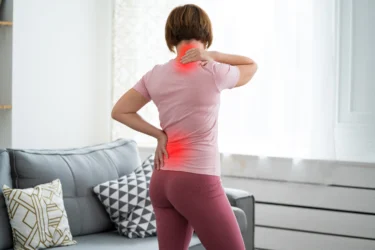
The worst diet habits with the western lifestyle and continuous work in front of laptops are the major reasons for spondylosis. Trayodashang guggulu may be used against spondylosis. A study2 by Sawant et al. in 2017 showed that Trayodashang guggulu might be beneficial for cervical spondylosis. Constituents like Shatavari, Ashwagandha and Guduchi are rejuvenators and may give stability to the muscles (dhatus). Whereas babbul acts on bones (asthidhatwagni) and may provide firmness. However, further studies are required to check if trayodashang guggulu may help in the case of cervical spondylosis. Therefore, you must consult your doctor if you experience any symptoms of cervical spondylosis. Do not self-medicate.

The phenols, alkaloids, flavonoids and other phenolic compounds present in trayodashang guggulu may show antioxidant activity. This was demonstrated by a study1 by Dadoriya et al. in 2018. It may deactivate the free radicals (harmful molecules present in the body) and protect them from various damages. Further studies are required to check the antioxidant activity of trayodashang guggulu.
From my experience, Trayodashang Guggulu may aid in gout. Studies1 suggest that Trayodashang Guggulu shows antioxidant and anti-inflammatory effects that make it a potential remedy in cases of inflammatory disease such as gout.
Dr. Siddharth Gupta, BAMS, MD (Ayu)
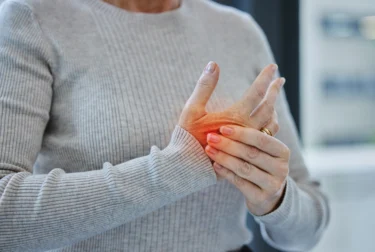
Trayodashang guggulu may be beneficial for several inflammatory conditions like the stiffness of the knee, bone marrow disorder, lockjaw, inflammation of ligaments, neurological and musculoskeletal diseases, pain in the arm and cardiac failure and bone fracture due to the presence of bioactive compounds like flavonoids and phenols. A study1 by Dadoriya et al. in 2018 showed that trayodashang guggulu might inhibit proteinase and lipoxygenase (enzymes that promote inflammation). However, further studies are required to check if trayodahsang guggulu may reduce inflammation. Therefore, you must consult your doctor if you suspect inflammation.

Arthritis is a disease associated with inflammatory pain. Bioactive compounds like flavonoids and phenols present in trayodashang guggulu may be responsible for reducing inflammatory pain. A study3 by Gupta et al. in 2022 showed that trayodashang guggulu might inhibit inflammatory mediators like COX-2 and reduce inflammatory pain, which may be beneficial for arthritis. Inflammatory mediators are molecules in the body that cause inflammation. However. Further studies are required to check if trayodashang guggulu may be helpful in the case of arthritis. Therefore, you must consult your doctor if you experience any symptoms of arthritis.

Sciatica refers to the pain radiating down one or both legs from the lower back along the sciatic nerve. According to the studies5 by Moharana et al. in 2018, trayodashang guggulu may be beneficial in the case of sciatica. Effects of trayodashang guggulu are particularly noticeable in vata dosha, the primary cause of joint and bone-related disorders3,7. However, further studies are required to check if trayodashang guggulu may be beneficial for sciatica. You must immediately consult your doctor if you suspect any symptoms of sciatica.

The condition that causes pain in the forearm is known as the tennis elbow. Pain, tenderness, restricted movement, stiffness and diminished grip strength are the primary clinical signs of tennis elbow. The study6 by Rajurkar et al. in 2022 showed that the trayodashang guggulu tablet might reduce pain and functional disability related to the tennis elbow. However, further studies are required to check if trayodashang guggulu may be beneficial in the case of tennis elbow. Therefore, you must consult your doctor if you experience any symptoms of tennis elbow.

Trayodashanga Guggulu may directly affect the Asthigata Vata (bone and soft tissue pain) and brings the vitiated Vata Dosha back into balance. An imbalance in vata dosha causes conditions related to joints and bones. The Ayurvedic mind-body element associated with air and space is called vata dosha. It governs all movement and processes in your mind and body, including blood flow, elimination, breathing and thought action. A Vata imbalance may lead to bone thinning, according to Ayurveda. Therefore, trayodashang guggulu may be beneficial in case of osteoporosis. This was shown by a study7 conducted by Sannakki et al. in 2020. However; further studies are required to check if trayodashang guggulu may be beneficial for osteoporosis. Therefore, you must consult your doctor if you experience any symptoms of osteoporosis.

According to the study4 by Prasad et al. in 2016, trayodashang guggulu may help improve the immune system. It may have immune-modulating properties, which may stimulate the immune system. However, further studies are required to check if trayodashang guggulu may affect the immune system.
Though studies show the benefits of trayodashang guggulu in various situations, these are insufficient and further studies are needed to establish the true extent of trayodashang guggulu on human health.
Trayodashang guggulu is a polyherbal ayurveda preparation that is available as a tablet. It can be given with gruel (thin porridge), warm water and milk of meat soup5.
You must consult a doctor before taking large quantities of trayodashang guggulu or herbal supplements. Do not discontinue an ongoing modern medical treatment with an ayurvedic/herbal preparation without consulting a qualified doctor.
A high dose of trayodashang guggulu may have the following side effects:
You must consult your doctor if you experience any side effects after consuming trayodashang guggulu.
Also Read: Nagkesar (Mesua Ferrea): Benefits, Uses, Side Effects & More!
As with any other general medicine, general precautions should be taken while having trayodashang guggulu. You must consult your doctor before having trayodashang guggulu. Pregnant women and lactating mothers should take special care. Precaution should be taken before giving trayodashang guggulu to the elderly or children. In such cases, you must have trayodashang guggulu only if your doctor prescribes it.
Also Read: Licorice (Mulethi): Uses, Benefits, Side Effects, and More!
There is not enough evidence on the interaction of trayodashang guggulu with other drugs. Further studies on the interaction of trayodashang guggulu are required. Therefore, you must consult your doctor if you are on any other medication before consuming trayodashang guggulu.
Also Read: Raisins (Kishmish): Uses, Benefits, Side Effects By Dr. Smita Barode
Trayodashang guggulu is an essential Ayurvedic polyherbal formulation. It consists of Babula, Hapusa, Shatavari, Ashwagandha, Sunthi, Satavha, Vradadaru, Sati, Shuddha guggulu, Rasana, Guduchi, Gokshuara, Yavani and Goghrat (ghee)1.
Trayodashang guggulu may be used to reduce pain and inflammation. It may act against the conditions like tennis elbow, arthritis, osteoporosis, sciatica and cervical spondylosis. It may have antioxidant properties and may enhance the immune system. However, further studies are required to check whether trayodashang guggulu may benefit the mentioned conditions. Therefore, you must consult your doctor if you experience symptoms of the mentioned conditions1,6.
Trayodashang guggulu is a polyherbal ayurveda preparation that is available as a tablet. It can be given with gruel (thin porridge), warm water and milk of meat soup4.
Trayodashang guggulu may cause stomach upset, belching, indigestion and loss of appetite. You must consult your doctor if you experience any side effects8.
Bioactive compounds like flavonoids and phenols present in trayodashang guggulu may be responsible for reducing inflammatory pain. They might inhibit inflammatory mediators (molecules in the body that cause inflammation) and reduce inflammatory pain, which may be beneficial for arthritis3. However, you must consult your doctor if you experience any symptoms of arthritis.
Disclaimer: The information provided here is for educational/awareness purposes only and is not intended to be a substitute for medical treatment by a healthcare professional and should not be relied upon to diagnose or treat any medical condition. The reader should consult a registered medical practitioner to determine the appropriateness of the information and before consuming any medication. PharmEasy does not provide any guarantee or warranty (express or implied) regarding the accuracy, adequacy, completeness, legality, reliability or usefulness of the information; and disclaims any liability arising thereof.
Links and product recommendations in the information provided here are advertisements of third-party products available on the website. PharmEasy does not make any representation on the accuracy or suitability of such products/services. Advertisements do not influence the editorial decisions or content. The information in this blog is subject to change without notice. The authors and administrators reserve the right to modify, add, or remove content without notification. It is your responsibility to review this disclaimer regularly for any change
“As long as we are not living in harmony with nature, we cannot expect ourselves to heal.” Have you ever heard about the miracle tree? The drumstick tree or Moringa, is called the miracle tree as every part of it benefits humans and animals. Due to this reason, In Sanskrit, the drumstick tree is called Shobhanjana, meaning auspicious. Other names for the drumstick tree include the horseradish tree (English), Sainjna or Saguna (Hindi) and Akshiva or Haritashaaka (Ayurveda). The scientific name of drumstick tree is Moringa oleifera and it is a member of the Moringaceae family. It is a fast-growing evergreen tree cultivated worldwide from India to Africa and numerous other arid and other tropical countries. The leaves, flowers, seeds and roots of the drumstick trees are edible and are used to prepare a variety of delicious recipes. This “tree of life” has various benefits; let us know more about the uses and benefits of drumstick tree leaves1.
Friendly Reminder: The information shared here is for educational purposes only and the reader should consult a registered medical practitioner before implementing any changes to their health routine.
The leaves of the drumstick tree are packed with the goodness of carbohydrates, proteins, fats, carotenoids, vitamins A and E and minerals like potassium, calcium, iron, magnesium, etc. The phytochemicals in drumstick tree include flavonoids, phenolic compounds, glucosinolates and carotenoids. The nutritional value of the drumstick plant per 100 grams is given below:
Based on my observations, I have found that different parts of the drumstick tree, including the leaves, pods, and roots, may possess pain-reducing properties. I recommend considering the use of drumstick as a natural remedy for pain relief7.
Dr. Siddharth Gupta, B.A.M.S, M.D (Ayu)
Drumstick tree shows numerous scientifically proven properties; some of which are mentioned below1:
Be careful when consuming Moringa leaves! They contain a high concentration of saponins, which can interfere with the absorption of important minerals like zinc and magnesium. It is important to be mindful of this potential risk and monitor your Moringa leaves intake8.
Dr. Smita Barode, B.A.M.S, M.S.
Some of the potential benefits of the Drumstick tree are described below:
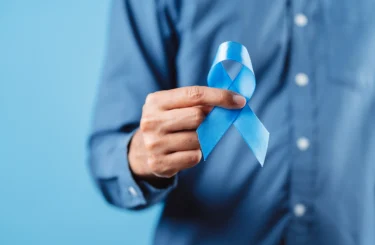
Cancers of the colon and rectum are the third most lethal cancers affecting both males and females equally. Asmari et al. conducted a review in 2015 stating that Drumstick tree halts the abnormal multiplication of colorectal cells and inhibits the formation and progression of cancer cells2. This effect is attributed due to the presence of eugenol, a polyphenol present in drumstick leaves. This indicates that the consumption of drumsticks may help manage colorectal cancers. Also, the presence of carotenoids and flavonoids may help in exerting a protective effect against cancers. However, to claim these results in humans, we need more studies. Additionally, it is advised to consult a physician for the proper management of colorectal cancer and not consider usage of drumstick trees as a remedy for cancers.

High blood pressure or hypertension is a condition in which blood flows through the arteries at very high pressure. Direk et al. conducted an animal study3 in 2019 stating drumstick consumption helps in relaxing the arteries and thus helps reduce blood pressure. This states that drumsticks may have the potential to manage hypertension. However, we need more human trials to claim these effects with greater reliability. It is better to take a professional opinion if you suffer from high blood pressure instead of self-medicating.
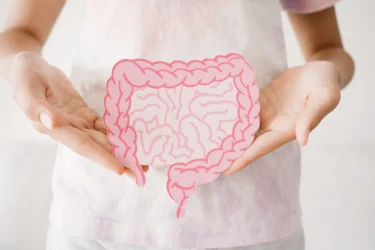
Colitis is a condition characterised by inflammation and ulceration in the digestive tract. A review4 by Mohsen et al. done in 2014 states that drumsticks may have the potential to manage colitis by reducing inflammation and ulcers. This effect is attributed to the presence of polyphenols which exert anti-inflammatory and antioxidant properties. Thus, it may be concluded that drumsticks may have the potential to manage colitis. However, we need more human studies to claim these results with greater reliability. Additionally, it is always advised to consult a physician for the proper management of colitis and not rely on self-medication with the drumstick tree.

Medicinal plants like the drumstick tree are coming into the limelight as antibacterial agents. Abalaka et al. conducted a study5 in 2012 to test the efficacy of the drumstick trees on different bacteria like E.coli, H.pylori, S.typhi, K.pneumonia, etc. A plant-based chemical called glucosinolate present in the leaves of this tree inhibits the growth of these bacteria; thus drumstick leaves may have the potential to manage bacterial infections caused by the above-mentioned bacteria and help in managing infections like urinary tract infections, typhoid, pneumonia, etc. However, we need more studies to confirm these results in humans. It is recommended to avoid self-medication and consult your physician for the proper management of any bacterial infection.

Diabetes (Type I & II) is a metabolic disorder characterised by an increase in blood glucose due to decreased production or resistance of a hormone called insulin which regulates blood glucose. A review1 conducted by Piyush et al. in 2022 stated that the drumstick tree might have the potential to decrease blood glucose levels. This effect is attributed to polyphenols that inhibit enzymes that break down carbohydrates into simpler sugars and increase blood glucose. Additionally, the antioxidant effect plays an important role in reducing the increased blood glucose. Therefore, the leaves of drumstick tree may have the potential to manage diabetes. However, it is advised not to generalise these results in the management of diabetes. To claim these results and apply them in humans, we need more studies. In addition, you should consult your physician for the proper management of diabetes and not rely on self-medication.

Though there are studies that show the benefits of Drumstick tree in various conditions, these are insufficient and there is a need for further studies to establish the true extent of the benefits of drumstick tree on human health.
I highly recommend incorporating drumstick tree extracts into your diet, as it might be an exceptional source of vitamin A. This essential nutrient has the potential to safeguard your eye health and stave off deficiencies. Including drumsticks in your meals, especially for your children, is a great step towards maintaining optimal vision and promoting eye health7.
Dr. Rajeev Singh, BAMS
You must consult a qualified doctor before taking any herbal supplements. Do not discontinue or replace an ongoing treatment of modern medicine with an ayurvedic/herbal preparation without consulting a qualified doctor.
Also Read: Pancharishta: Uses, Benefits and Side Effects By Dr. Rajeev Singh
A review1 by George et al. in 2016 stated that drumstick contains high metallic content which can be toxic to humans. Therefore, excessive consumption of drumsticks should be avoided.
However, if you experience any adverse reactions to the drumstick tree, it is advised to discontinue its intake and immediately contact a doctor or your Ayurvedic physician who has prescribed it. They will be able to guide you appropriately for your symptoms.
Also Read: Banana Leaf: Uses, Benefits, Side Effects By Dr. Smita Barode
Consuming Drumstick tree is okay if taken in moderate amounts. However, general precautions must be followed in the following conditions1:
However, you must always seek the advice of your Ayurvedic physician about the possible interaction of Drumstick tree with other drugs and follow the prescription thoroughly, as they will know your health condition and other medications you are taking.
The scientific name of the drumstick tree is Moringa oleifera and it is a member of the Moringaceae family1.
The drumstick tree is called the miracle tree1.
In Hindi, the drumstick tree is called as Sainjna or Saguna.
Yes, intake of the leaves of the Drumstick tree may help in weight loss.
There is no study stating benefits of drumstick leaves to manage jaundice.
Disclaimer: The information provided here is for educational/awareness purposes only and is not intended to be a substitute for medical treatment by a healthcare professional and should not be relied upon to diagnose or treat any medical condition. The reader should consult a registered medical practitioner to determine the appropriateness of the information and before consuming any medication. PharmEasy does not provide any guarantee or warranty (express or implied) regarding the accuracy, adequacy, completeness, legality, reliability or usefulness of the information; and disclaims any liability arising thereof.
Links and product recommendations in the information provided here are advertisements of third-party products available on the website. PharmEasy does not make any representation on the accuracy or suitability of such products/services. Advertisements do not influence the editorial decisions or content. The information in this blog is subject to change without notice. The authors and administrators reserve the right to modify, add, or remove content without notification. It is your responsibility to review this disclaimer regularly for any changes.
You must have enjoyed the site of beautiful yellow senna blossom landscaping highways and home gardens. Senna is a member of a large genus of tropical flowering plants. It has frequently been used in herbal medicine. Senna is the leaf or fruit (pod) of the plant Senna Alexandrina. Senna is also called Fletcher’s Castoria, Ex-lax and SenokotIt as trade names. It has been employed as a laxative and stimulant in folk medicine. Many herbal teas used for weight loss and bowel movements contain senna1,2. Let us discuss the health benefits of senna.
The nutritional value of the leaves of Senna suggests that they can be consumed for their nutritional benefits. The nutritional contents of senna are given below:
Further, there are phytochemicals also present in senna. They are saponins, tannins, terpenoids, alkaloids, cardiac glycosides and sterols3.
Several properties of senna studied by multiple research teams make it potentially beneficial. Some of the beneficial properties of senna are:
Senna is potentially beneficial in several conditions. Some of the potential uses and senna benefits are as follows:

Researchers in recent studies are attempting to explore plant products to prepare drugs against microbial diseases. Senna is well known for its anti-fungal activity, and it may act against fungal infection. It also possesses activity against E. coli bacterial DNA. Studies by Kumar et al. 2013, have shown that the phenolic compounds present in senna may act against microbial diseases. These compounds were extracted from the plant and may act against Gram-negative Pseudomonas aeruginosa and Escherichia coli, Gram-positive bacteria-Staphylococcus aureus. Further, they may act against fungi-Aspergillus flavus, Aspergillus niger, Rhizopus stolonifera and Fusarium oxisporum4. However, many detailed studies are needed to prove the benefits of senna for such infections in humans. If you have any infection-related problems, consult your doctor and do not self-medicate.

It is established that oxidative stress can negatively affect the normal functioning of several body organs. Studies have also shown that oxidative stress may also be responsible for diseases like diabetes mellitus, which can increase the blood glucose level. The antioxidant properties of senna may be responsible for its anti-diabetic usage4. However, the data available is insufficient to establish the mentioned benefits of senna on blood sugar levels in humans. Further, more studies are needed to validate these benefits.

The antioxidant activity of the senna may help to control obesity. The senna may help properly function the digesting enzyme in obese patients. It might exhibit anti-obesity benefits4. However, we need to conduct further studies to manifest the effects of senna on obesity conditions in humans.

The bioactive compounds in senna leaves are responsible for their potential health benefits. Studies by Onyegeme-Okerenta et al. 2017 show that the bioactive compounds present in senna might be responsible for their potential activity against cancer cells. It might lower lipid peroxidase levels and thus kill cancer cells. Further, it also restricts cancer cell spread. These studies are insufficient to give humans the same benefits as the herb. Thus, further studies are required to prove this claim5.

Though studies show Senna’s benefits in various conditions, these are insufficient, and there is a need for further studies to establish the true extent of the benefits of Senna on human health.
Unregulated Senna consumption for a long duration may be linked to liver damage accompanied with a reliance on laxatives. If you have one or more of the following conditions, I suggest you should consider your doctor’s opinion before taking Senna: colon issues, heart disease, or liver illness. With drugs like blood thinners and diuretics, senna may cause interactions. Senna should not be used by those having Crohn’s disease, intestinal blockages, or stomach discomfort. Additionally, it might react negatively with cardiac medicines.
Dr. Siddharth Gupta, B.A.M.S, M.D (Ayu)
Adults can consume senna. While children and the elderly may take senna only when advised by an Ayurvedic doctor2.
You must consult a qualified doctor before taking any Senna supplements. Do not discontinue or replace an ongoing treatment of modern medicine with an ayurvedic/Senna preparation without consulting a qualified doctor.
Fun fact: Traditionally, the seeds of Parijat (pods) are used as a sore throat remedy. I recently read an article that suggests regular use of Parijat extracts may keep all the diseases at bay.
Dr. Rajeev Singh, BAMS
Senna is safe for adults if taken in the recommended doses for a limited period. FDA approved Senna as a non-prescription medicine. However, it might cause side effects if taken at a higher dosage. Most side effects are related to senna’s laxative effect. Some common side-effects of senna are as follows:
Also Read: Raisins (Kishmish): Uses, Benefits, Side Effects By Dr. Smita Barode
Senna must be taken in the recommended dosage for a limited period. Further, the following precautions must be taken while consuming senna for its medicinal benefits:

Since senna is linked to serious side effects, including laxative dependence and liver damage. It is advisable not to take any herbs without consulting a qualified doctor during pregnancy.

Senna is known to have side effects it would be better to consult a doctor before taking any herbal supplement if you are breastfeeding your baby.

Senna is considered safe for children over the age of 2 years. However, it may have some side effects in children. Thus it is recommended to be given to children with precaution only under the guidance of a qualified Ayurvedic doctor.

People suffering from intestinal blockage, stomach pain, diarrhoea, appendicitis, stomach inflammation, inflammatory bowel disease, and haemorrhoids must avoid consuming senna2.
Also Read: Sandalwood: Uses, Benefits, Side Effects & More!
Senna might show some moderate interactions with medicines. Some interactions of senna are as follows:
Senna can cause diarrhoea in some people. Diarrhoea may enhance warfarin effects and thus increase bleeding risks in people taking the combination of these two. It is advisable to avoid senna if you are taking warfarin4.
Senna is a stimulant laxative. Stimulant laxatives can decrease potassium levels in the body. Less potassium levels can increase the risk of side effects from digoxin.
Senna might decrease oestrogen effects by affecting oestrogen absorption in the body.
Senna can potentially cause diarrhoea as it is a laxative. It may also decrease potassium levels. Thus the combination of senna with diuretics might lead to dropping in potassium levels2.
When you use senna with herbal supplements, it might cause potassium levels to drop too low. Taking senna with other herbal supplements might show a laxative effect, leading to diarrhoea. Therefore, it is advisable to avoid taking senna along with herbs such as buckthorn, liquorice, aloe, horsetail, gossypol and rhubarb2.
Also Read: Hibiscus: Uses, Benefits, Side Effects and More!
Yes, studies have shown that senna might have toxicity towards the liver and cause liver injury. This liver injury can be attributed to the anthraquinone derivatives in senna extracts. Liver injury from senna overuse is rare and mostly self-limited and reversible. However, some cases have also reported acute liver failure1. Thus, take senna as per the doctor’s prescription and follow their advice on dosage and duration.
Though senna has been observed to be safe for children above 2 years, there are certain side effects associated with the herb. It is thus recommended to be given to children with precaution under expert supervision and advice2.
Senna products must be avoided along with other herbal supplements as they may show some interactions leading to lowering potassium levels below normal. Herbs like rhubarb, liquorice, horsetail, aloe, gossypol, and buckthorn must be avoided in combination with senna. Please take herbal supplements only under the guidance of Ayurvedic experts2.
Due to its laxative properties, senna may help provide relief from constipation. However, there are many side effects associated with senna laxative benefits. It may be consumed only if advised by a qualified doctor2,4.
Senna might show some benefits for the skin as it might have some healing effects on different skin diseases and external body infections. The senna leaf paste mixed with vinegar might be used for this purpose. Since there are only a few studies that provide evidence for these senna leaves benefits. Thus, it is advisable to consult a doctor before applying any herb to the skin4.
Disclaimer: The information provided here is for educational/awareness purposes only and is not intended to be a substitute for medical treatment by a healthcare professional and should not be relied upon to diagnose or treat any medical condition. The reader should consult a registered medical practitioner to determine the appropriateness of the information and before consuming any medication. PharmEasy does not provide any guarantee or warranty (express or implied) regarding the accuracy, adequacy, completeness, legality, reliability or usefulness of the information; and disclaims any liability arising thereof.
Links and product recommendations in the information provided here are advertisements of third-party products available on the website. PharmEasy does not make any representation on the accuracy or suitability of such products/services. Advertisements do not influence the editorial decisions or content. The information in this blog is subject to change without notice. The authors and administrators reserve the right to modify, add, or remove content without notification. It is your responsibility to review this disclaimer regularly for any changes.
Mangoes and summer seasons are a match made in heaven! The sweet and juicy taste coupled with countless health benefits justify why mango is called the “king of fruits”. Mangifera indica, mango or aam, is an important fruit in Ayurveda. It belongs to the genus Mangifera, and family Anacardiaceae which contains 30 different species. India ranks first among the major mango-producing countries. India is famous for its wide range of mango varieties, like Alphonso variety of Ratnagiri, Badami variety of Karnataka, Dasheri variety of Lucknow and Kesar variety of Gujarat to name a few. Mangoes are good for our taste buds and our health. They are also a rich source of fibre, vitamins, minerals and antioxidants like mangiferin and glucosyl xanthone. Let us read more about some mango benefits1.
Mango (Aam) is packed with various nutritional components that are given as follows. They are a good source of vitamins, minerals and antioxidants like mangiferin and glucosyl xanthone, and carotenes.
In my opinion, eating mangoes might be a way of giving your body a natural defence against certain diseases. Mangoes might have superpowers against certain types of cancers. Yes, it’s true! Thanks to the magical combination of beta-carotene and other special substances, mangoes might help against leukaemia and even slow down the progression of prostate and colon cancers11.
Dr. Siddharth Gupta, B.A.M.S, M.D (Ayu)
The mango shows numerous scientifically proven properties; some of these properties are mentioned below:
Some of the potential benefits of mango are described as follows:

Breast cancer is one of the most common cancers, leading to pre-mature death of females globally. Natural products are now becoming important sources for the discovery of anti-cancer agents. Mangifera indica may have the potential for the management of breast cancers. Banerjee et al. conducted a study in 2015 to assess the effect of mangoes on breast cancer xenografts in mice. This study3 showed that polyphenols like gallic acid, galloyl glycosides and gallotannins in mangoes might have a chemotherapeutic potential against breast cancer. This indicates that mangoes may help in managing breast cancer. However, more studies are required to support these claims.

Ulcerative colitis is a chronic inflammatory condition affecting the colon and rectum. Mangoes may help in reducing inflammation because of the presence of polyphenols like gallotannins and gallic acid. Kim et al. conducted a study4 in 2016 to assess mango’s anti-inflammatory effects in a preclinical colitis model. The results of this study4 showed that mango consumption might help in managing ulcerative colitis. However, more human studies are required to ascertain these claims.
From my perspective, eating mangoes can be a tasty solution to help with constipation. In a study12, it was found that munching on mangoes might actually improve the symptoms of constipation. Thus, mangoes may be a delicious way to keep things flowing smoothly in your digestive system.
Dr. Smita Barode, B.A.M.S, M.S.

Fruits and vegetables are a rich source of bioactive compounds which may help in managing the blood glucose level. The study conducted by Evans et al. 2014 showed that mangoes may reduce blood glucose levels in both females and males. The mango contains tocopherols, carotenoids, dietary fibre, ascorbic acid, gallic acid, quercetin and mangiferin. These biologically active compounds may help in normalising blood glucose levels. However, to claim all these benefits further research and confirmation are needed. If you suspect high blood glucose levels, consult your doctor and do not self-medicate5.

Mangoes, if consumed in moderate amounts, may help achieve healthy hair and nourished skin due to its high Vitamin A content. Additionally, mangoes may act as a natural sunblock by protecting our skin and hair from damage caused due to ultraviolet rays. Therefore, there is a possibility that the consumption of mango can benefit skin and hair, but we need more human studies6 to support these claims. If you have any skin and hair related problems, consult a doctor and do not self-medicate.

Macular degeneration is a common eye disorder which causes vision loss. Mangoes are rich in antioxidants like lutein, zeaxanthin and Vitamin A, which may help deal with macular degeneration. Mango is also rich in carotene which may help in vision. Thus, it may indicate that consuming mango may help manage macular degeneration. However, there is a lack of studies6 to support these claims.

Mangoes are a good source of nutrients in the diet. The nutrient intake of mango consumers vs. non-consumers was obtained from the NHANES database. It was observed that people who consumed mangoes had a higher intake of magnesium, potassium, folate, Vitamin A, C and E and dietary fibre compared to the non-consumers. This may indicate that the consumption of mangoes can help improve nutrient intake and diet quality. However, more studies7 need to be conducted to support these claims.

Though there are studies that show the benefits of Mango in various conditions, these are insufficient and there is a need for further studies to establish the true extent of the benefits of Mango on human health.
Let me tell you a secret. Mangoes are not just delicious; they’re also packed with a special ingredient called mangiferin! This fancy-sounding compound can be found in various parts of the mango fruit, like the peel, stalks, leaves, barks, kernel, and even the stone. Mangiferin might be just the secret weapon as it is high in antioxidants13.
Dr. Rajeev Singh, BAMS
This super versatile fruit can be used in the following ways:
You must consult a qualified doctor before taking any herbal supplements or mangoes in large quantities. Do not discontinue or replace an ongoing treatment of modern medicine with an ayurvedic/herbal preparation without consulting a qualified doctor.
Also Read: Jackfruit (Kathal): Uses, Benefits, Side Effects and More!
A few side effects related to the consumption of mango include:
However, if you experience any adverse reactions to mango, it is advised to discontinue its intake and immediately contact a doctor or your Ayurvedic physician who has prescribed it to you. They will be able to guide you appropriately for your symptoms.
Eating mango is beneficial if taken in moderate amounts. However, general precautions must be followed in the given conditions:
Also Read: Water Apple: Uses, Benefits, Side Effects, And More!
Mangoes inhibit the cytochrome P450 enzymes, which are known to metabolize certain drugs like warfarin, propranolol, theophylline, etc. Inhibition of these enzymes can alter the blood concentration of drugs metabolized by this pathway. Therefore, you must always seek the advice of your Ayurvedic physician about the possible interaction of raw mangoes with other drugs and follow the prescription thoroughly, as they will know your health condition and other medications you are taking10.
The scientific name of mango is Mangifera Indica and it belongs to the family Anacardiaceae1.
Animal cell line studies support the use of mangoes for managing breast cancers. However, more studies are needed to claim these effects. Thus, it is recommended to consult a doctor for proper treatment3.
Mango is also known as the “king of fruits”1.
Yes. As mango is a rich source of Vitamin A, it may improve vision. However, it is advised to consult a doctor for proper diagnosis for vision-related problems and not consider the consumption of mango as an alternative to modern medicine6.
Consumption of mangoes in excess can cause short-term gastrointestinal disorders like stomach pain and diarrhoea and allergies in allergy-prone individuals10.
Disclaimer: The information provided here is for educational/awareness purposes only and is not intended to be a substitute for medical treatment by a healthcare professional and should not be relied upon to diagnose or treat any medical condition. The reader should consult a registered medical practitioner to determine the appropriateness of the information and before consuming any medication. PharmEasy does not provide any guarantee or warranty (express or implied) regarding the accuracy, adequacy, completeness, legality, reliability or usefulness of the information; and disclaims any liability arising thereof.
Links and product recommendations in the information provided here are advertisements of third-party products available on the website. PharmEasy does not make any representation on the accuracy or suitability of such products/services. Advertisements do not influence the editorial decisions or content. The information in this blog is subject to change without notice. The authors and administrators reserve the right to modify, add, or remove content without notification. It is your responsibility to review this disclaimer regularly for any changes.
Next Page »« Previous Page